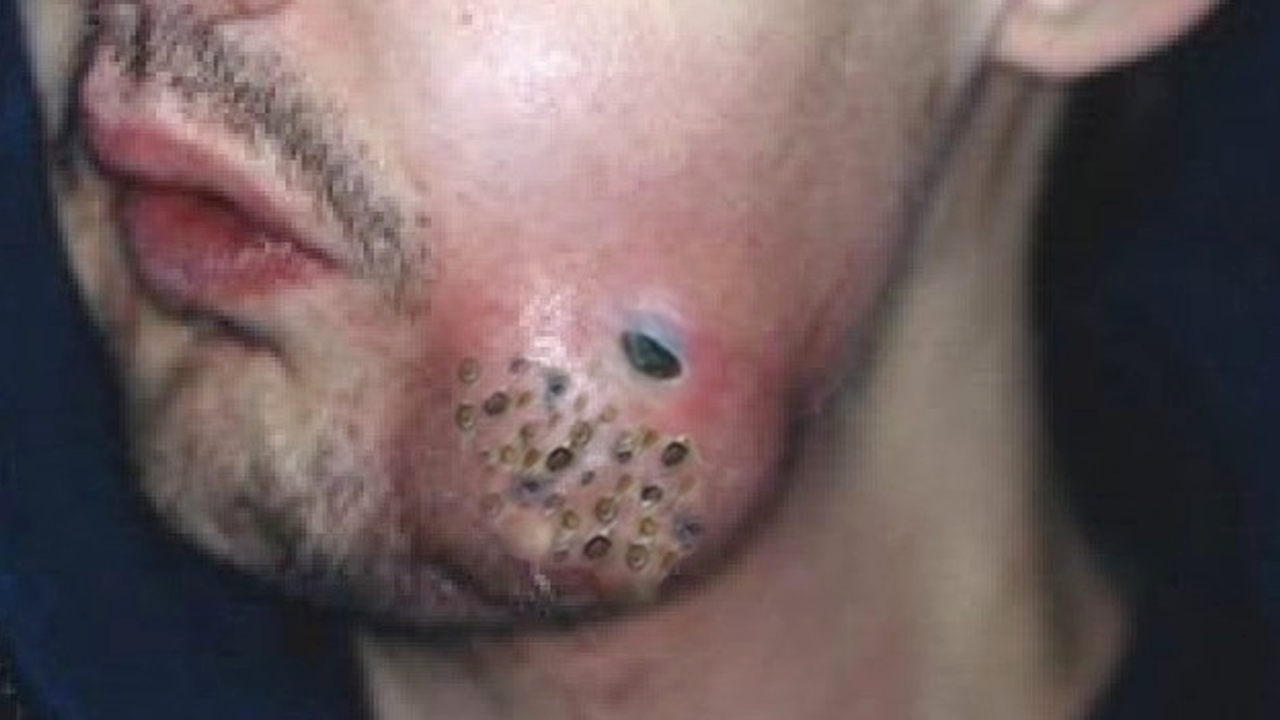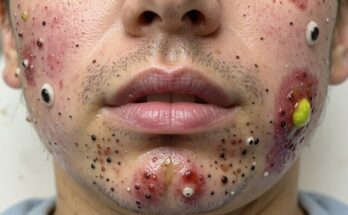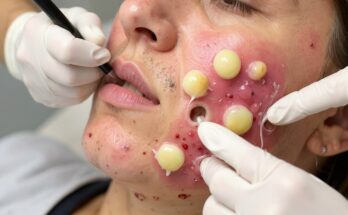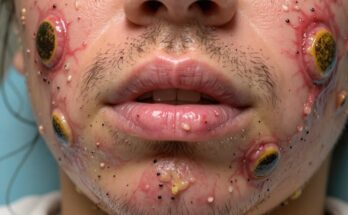Understanding and Treating Whiteheads: A Comprehensive Guide
Whiteheads, a common type of acne, are frustrating blemishes that can appear unexpectedly. This comprehensive guide delves into the causes, treatment options, and prevention strategies for these pesky skin imperfections.
What Causes Whiteheads?
The Root of the Problem: Clogged Pores
Whiteheads form when a pore becomes blocked with a combination of dead skin cells, sebum (oil), and bacteria. This blockage prevents the natural expulsion of sebum, leading to the characteristic small, white bump.
Hormonal Influences on Pore Blockage
Several factors contribute to pore blockage. Hormonal fluctuations are a significant contributor. Increased sebum production, often triggered by hormonal changes, is a primary culprit. These fluctuations are particularly common during:
- Puberty: The hormonal surge during puberty frequently leads to increased oil production and acne breakouts.
- Menstruation: Many women experience acne flares during specific phases of their menstrual cycle.
- Pregnancy: The hormonal shifts during pregnancy can also contribute to acne development.
- Hormonal Contraceptives: Some progesterone-only contraceptives can increase hormone levels, potentially exacerbating acne. Conversely, stopping birth control pills can sometimes lead to temporary acne increases.
Genetics and Whiteheads: A Family Affair
Genetic predisposition also plays a crucial role. A family history of acne significantly increases your risk of developing whiteheads and other forms of acne.
Friction and Whiteheads
Friction against the skin can also contribute to whitehead formation. Areas prone to rubbing, such as the chin (from athletic gear or other friction), are often susceptible.
Where Do Whiteheads Appear?
Whiteheads can appear virtually anywhere on the body. However, certain areas are more prone due to higher oil gland density. The T-zone (forehead, nose, and chin) is a classic acne hotspot. Other common locations include:
- Chest
- Back
- Shoulders
- Arms
Whiteheads can affect both men and women at any age, even appearing for the first time in adulthood.
Effective Whiteheads Treatments
Topical Retinoids: A First-Line Defense
For mild whiteheads, topical retinoids are often the first recommended treatment. These medications work by preventing pore clogging, but require consistent daily (or nightly) use for several months (typically three or more) to see noticeable results. Remember, retinoids prevent acne rather than treating existing breakouts directly, and daily sunscreen use is crucial due to increased sun sensitivity.
Addressing Inflammatory Acne
If you experience inflammatory acne (red bumps and pustules), your doctor may prescribe oral or topical antibiotics to reduce bacteria, inflammation, and redness. Oral antibiotics address the underlying bacterial contribution, while topical antibiotics target inflammation directly.
Hormonal Acne Management
For women, combined oral contraceptive pills can effectively reduce acne by regulating hormone levels. This is an FDA-approved method for both birth control and acne management.
Preventing Future Breakouts
While medication is effective, proactive lifestyle changes can significantly reduce whitehead occurrence.
Cosmetics and Skincare Choices
Choose oil-free, noncomedogenic cosmetics and skincare products. These products are specifically formulated to avoid clogging pores, minimizing the risk of acne. Similarly, opt for oil-free moisturizers and lotions.
Maintaining Cleanliness, Gently
Regular cleansing of the skin and hair is important, but avoid over-washing. Excessive washing can irritate the skin and worsen acne. A single daily wash with a mild cleanser and warm water, followed by gentle patting dry, is usually sufficient. Avoid harsh scrubbing or exfoliation.
Makeup Removal is Essential
Always remove makeup thoroughly before bedtime to prevent overnight pore blockage.
Debunking Whiteheads Myths
Several misconceptions surround whiteheads:
- Excessive washing/scrubbing: Does NOT prevent whiteheads and can actually worsen them.
- Dirt: Does NOT cause acne.
- Greasy foods: Have little to no impact on acne development.
Potential Complications and When to Seek Medical Advice
Picking at whiteheads can lead to irritation, infection, and potentially permanent scarring. For mild cases, over-the-counter treatments and lifestyle changes may suffice. However, if you experience persistent or severe acne, or if over-the-counter treatments prove ineffective, consult a dermatologist or your doctor for personalized advice and treatment options. They can assess your specific situation and recommend more advanced therapies if needed.



